Quite possibly, Queen Elizabeth II bestowed a last favour on Richard Quinn. His outpouring of a response to her death pushed the designer of colourful, multi-floral prints to prove, in tribute to her, that he can also make as elaborately and extensively in black. The first 22 looks, many heavily veiled in black lace, were made by Quinn and his core team of six, and 20 show-time helpers, day and night, in the 10 days since the Queen died. “It was a real labour of love, I suppose.
It was almost cathartic for us to put all of our emotions of mourning into it,” he said. “We wanted it to have that kind of real craftsmanship, the beauty of royalty, and to try to turn all of the shapes and embroidery that we do into that kind of that idea of uniform dressing up they did when her father [King George VI] died.”
Quinn, of course, owes more of a debt to the late Monarch than any other designer in London fashion history, since she came to his debut show in 2018 and presented him with the first annual Queen Elizabeth II Award for Design, her legacy for emerging fashion designers in Britain. He changed the set he’d planned, draping the walls in black and playing fragments of video footage of her young days on screens inset on a suspended central installation.
“What you saw there was her with her corgis, interacting with animals and nature. There’s even a bit where she’s in the carriage at the Coronation, and she doesn’t know she’s being filmed, is having a laugh and joke with Prince Philip, and suddenly she’s poised again. So, in that way, it was breaking that barrier, wanting to mourn the real her.”
He pulled out all the stops on multiple silhouettes for that section: black swing coats, his translations of fitted 1950s formal dresses, vast capes in lurex, a velvet tunic dress with a big glittering jewelled brooch. All the model’s faces were either completely obscured in floor length lace veils, or masked in point d’esprit netting. Under one, a tiny black crown was visible.
And then, well, it was on with part two: the show that should have been. That had been intended by Quinn to be spun around a concept about public surveillance. There were CCTV cameras bristling from the central ‘chandelier.’ The Queen video screens switched to live footage of the audience. Then came renderings of multi-coloured bulbous-topped bodysuits, his signature floral coats, feathered polka-dot embroideries, a pair of short bejewelled capes.
Understandable if that part didn’t have the chance, or the atelier-power to fully make its point. All the young minds and hands at Richard Quinn had been devoted to proving they were equal to showing up for a historic moment. The black put it in the shade, in a good way. The finale, however, brought back the lace veil in a hopeful way: a bride, in white, with a huge spray of flowers. Weddings have become a mainstay of his business since Elizabeth II gave him his first boost. He can thank her for that, too.

1 / 18

2 / 18

3 / 18

4 / 18
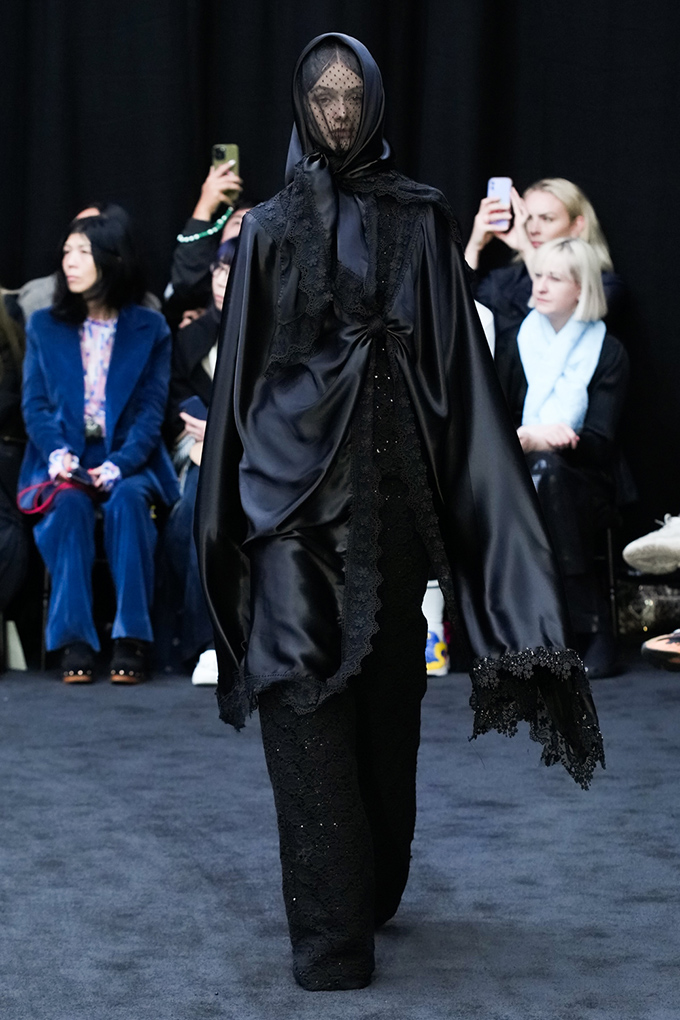
5 / 18
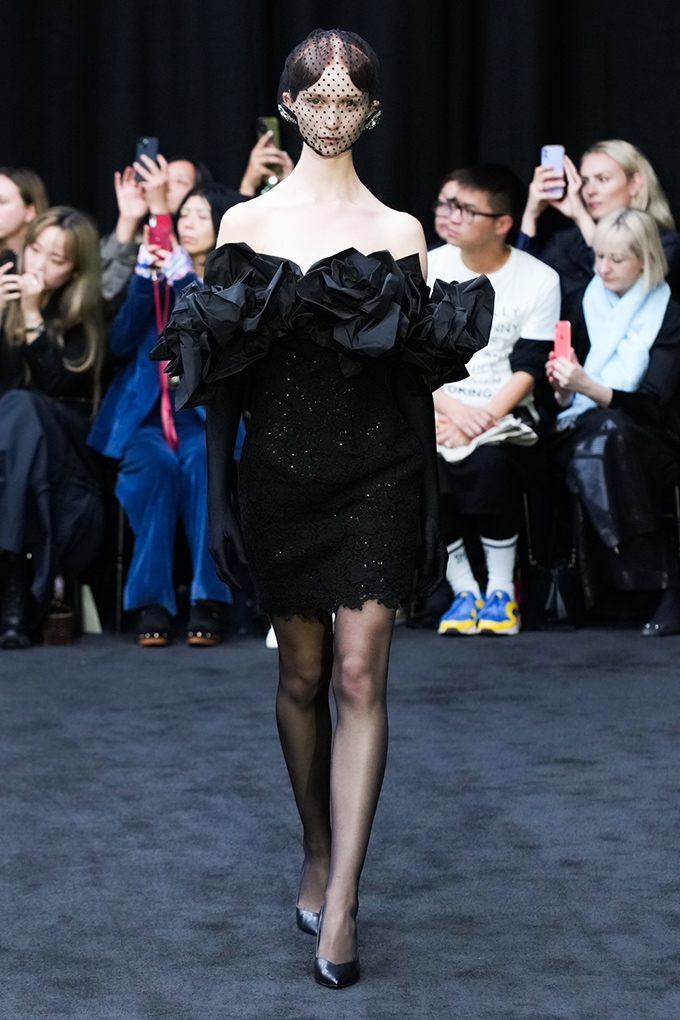
6 / 18
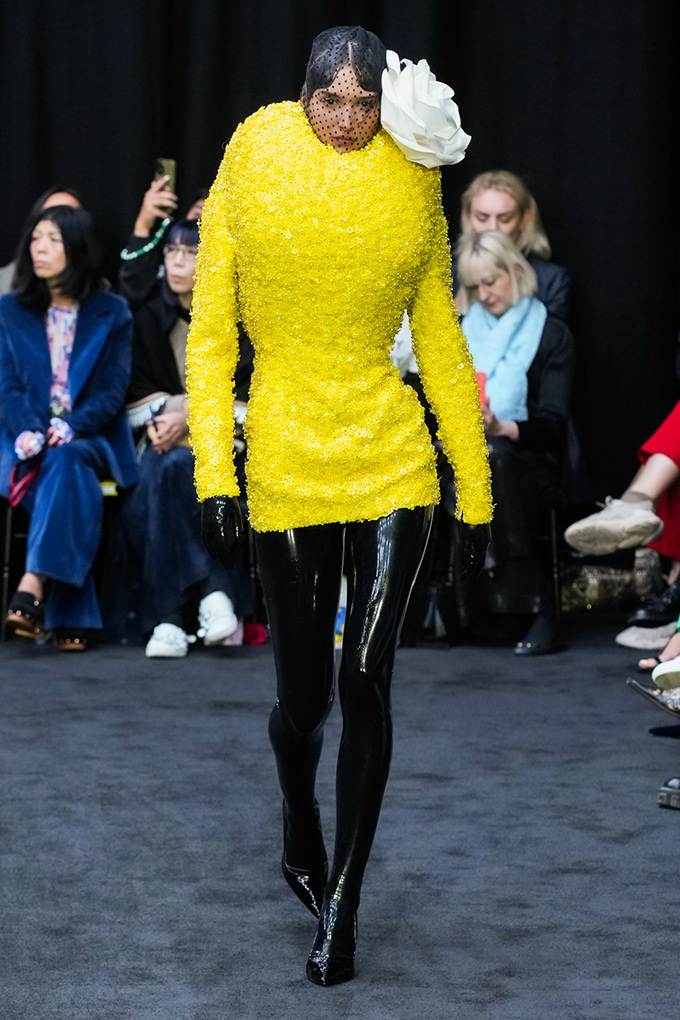
7 / 18
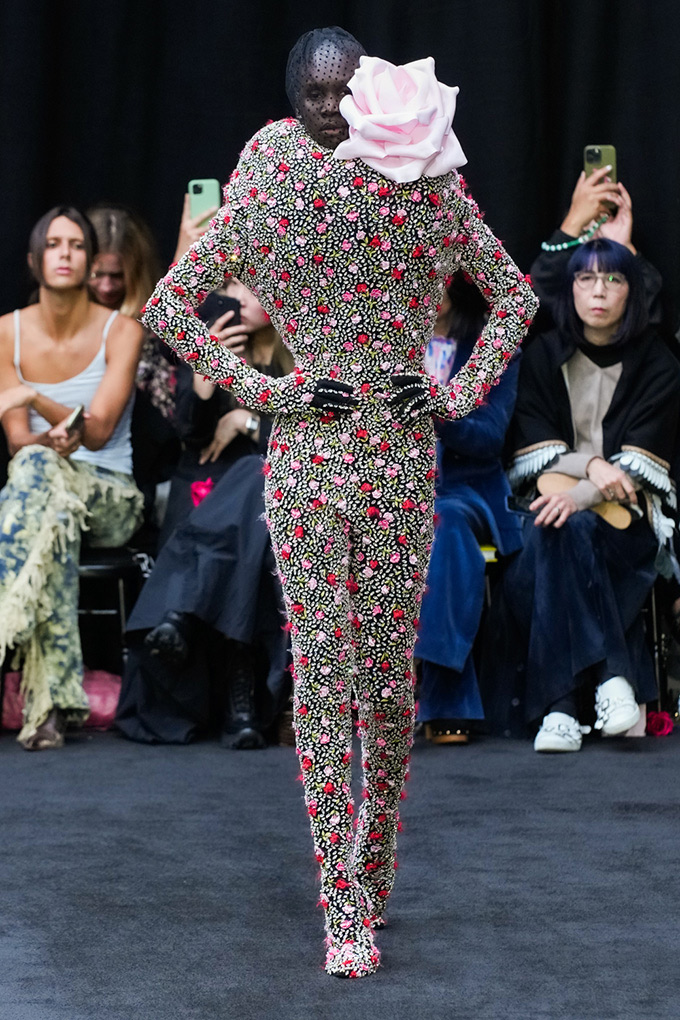
8 / 18

9 / 18

10 / 18
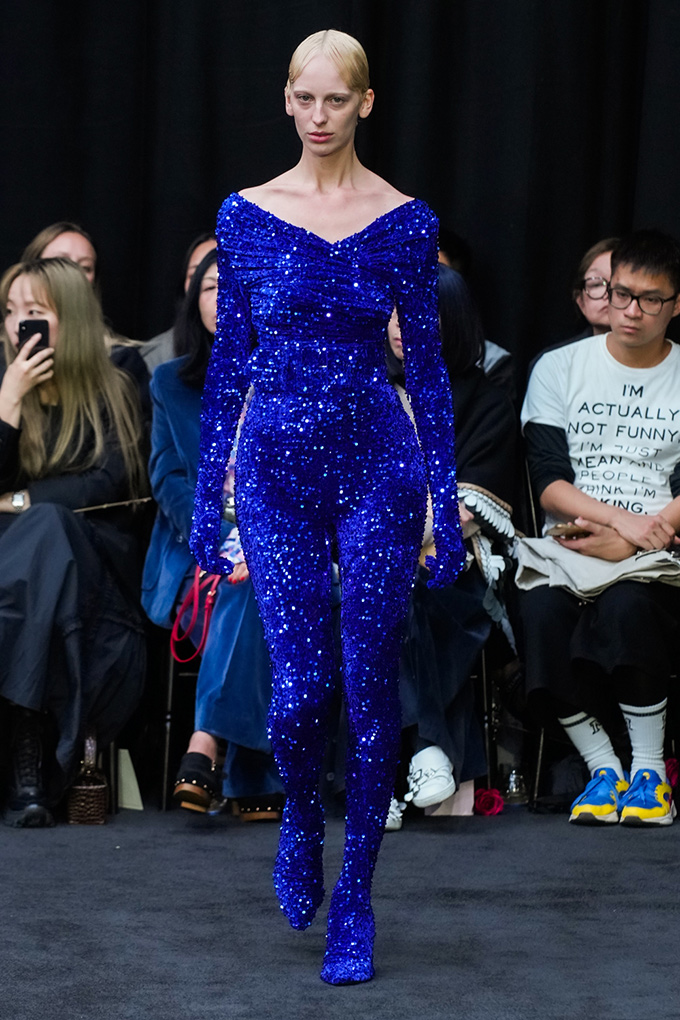
11 / 18
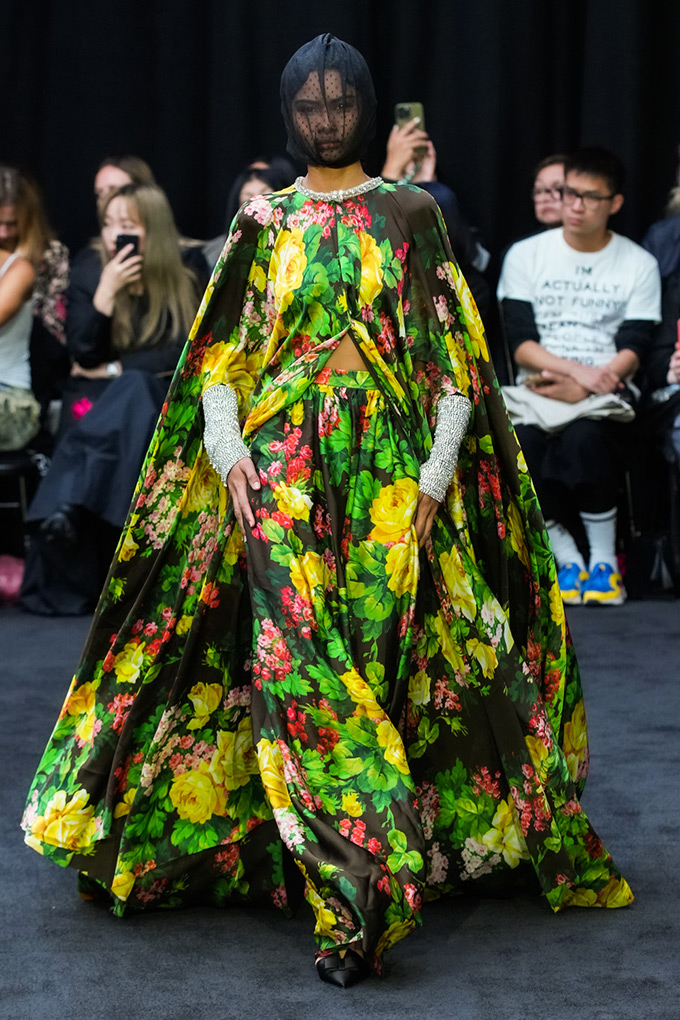
12 / 18
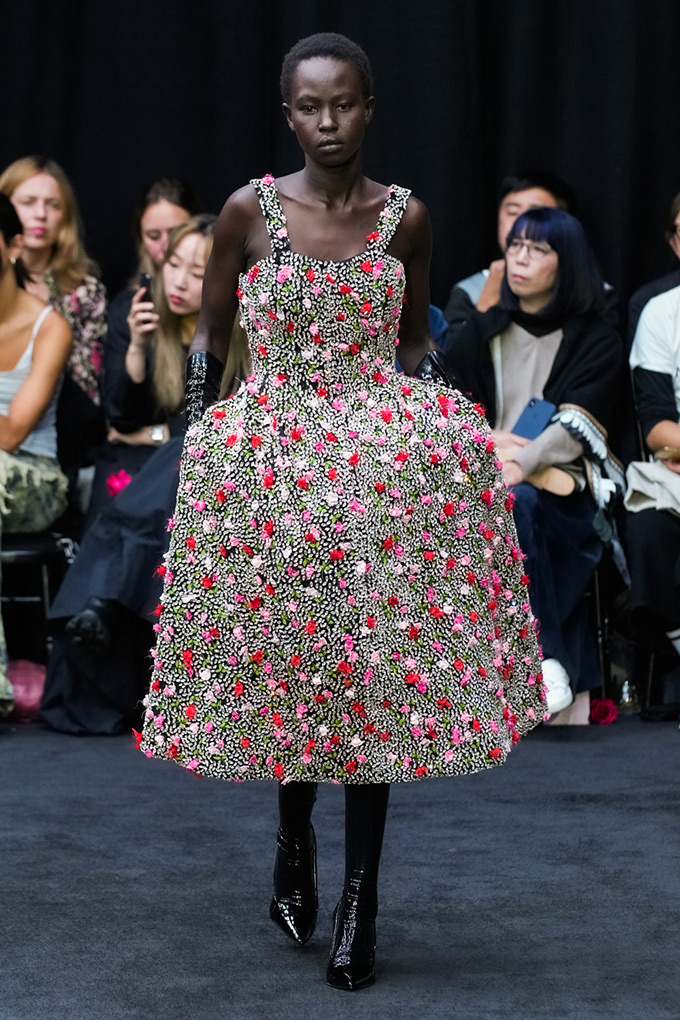
13 / 18

14 / 18
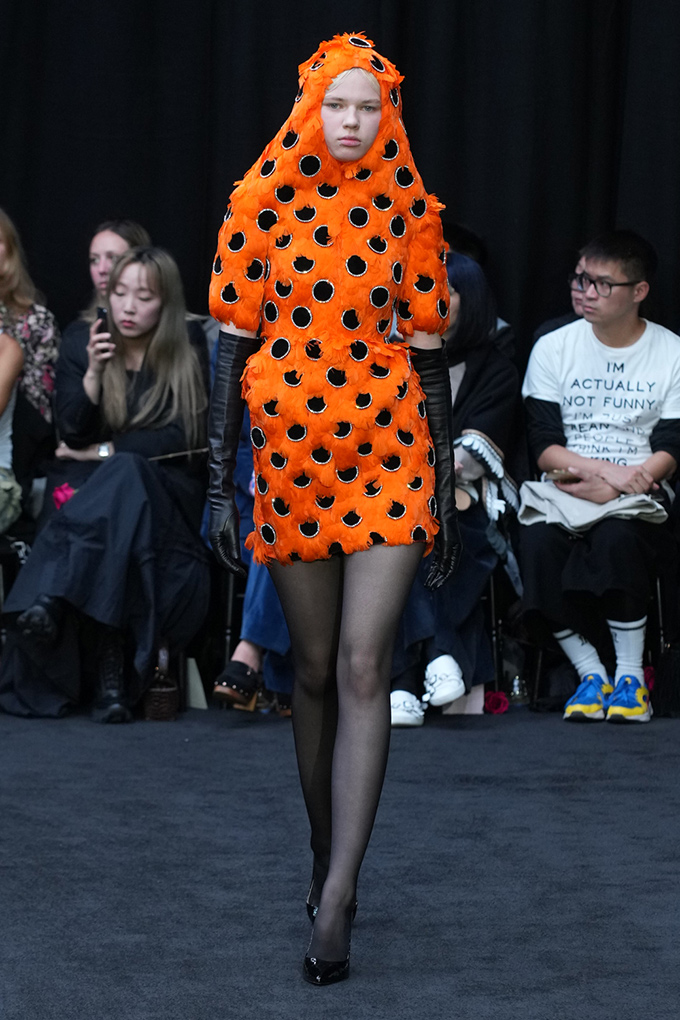
15 / 18

16 / 18

17 / 18






